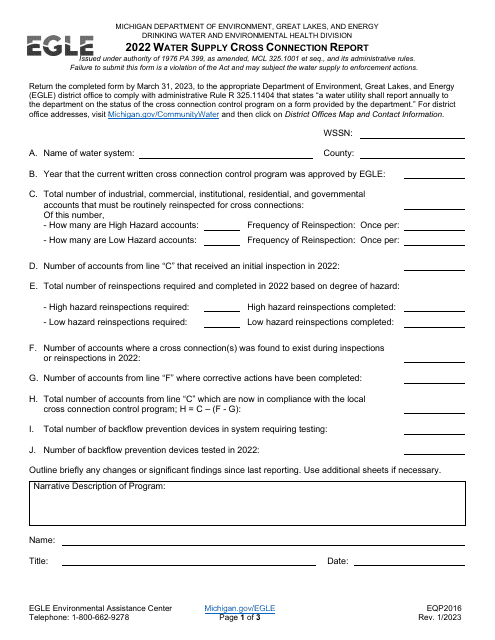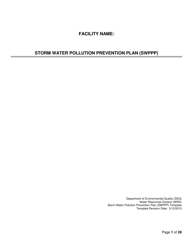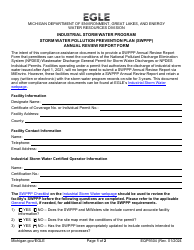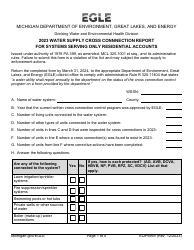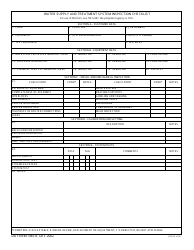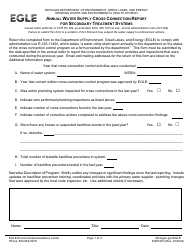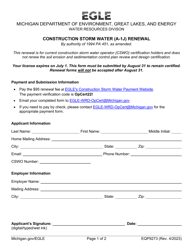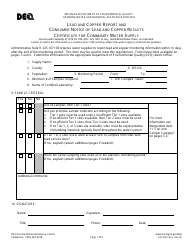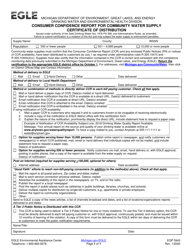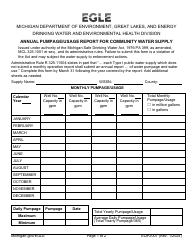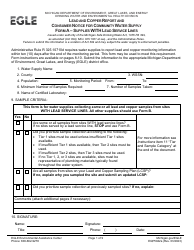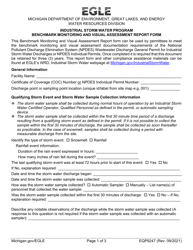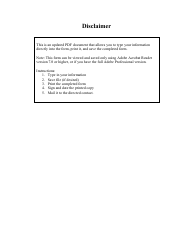This version of the form is not currently in use and is provided for reference only. Download this version of
Form EQP2016
for the current year.
Form EQP2016 Water Supply Cross Connection Report - Michigan
What Is Form EQP2016?
This is a legal form that was released by the Michigan Department of Environment, Great Lakes, and Energy - a government authority operating within Michigan. As of today, no separate filing guidelines for the form are provided by the issuing department.
FAQ
Q: What is the EQP2016 Water Supply Cross Connection Report?
A: The EQP2016 Water Supply Cross Connection Report is a form used in Michigan to document cross connections in water supply systems.
Q: What is a cross connection?
A: A cross connection is a physical connection between a potable water supply and a non-potable water source or a contaminant source.
Q: Why is the EQP2016 Water Supply Cross Connection Report important?
A: The EQP2016 Water Supply Cross Connection Report helps identify and address potential risks to the safety of the water supply.
Q: Who needs to fill out the EQP2016 Water Supply Cross Connection Report?
A: Water suppliers and facility owners or operators are responsible for completing the report.
Q: What information is typically included in the report?
A: The report includes details about the cross connections, such as the location, type, and measures taken to prevent contamination.
Q: Is the EQP2016 Water Supply Cross Connection Report required by law?
A: Yes, water suppliers in Michigan are required to complete and submit the report to the Department of Environment, Great Lakes, and Energy.
Q: Are there any penalties for not submitting the EQP2016 Water Supply Cross Connection Report?
A: Failure to submit the report may result in penalties, including fines and potential suspension of the water supply system.
Q: What should I do if I suspect a cross connection in my water supply?
A: If you suspect a cross connection, contact your water supplier or the Department of Environment, Great Lakes, and Energy to report the issue.
Q: Can I hire a professional to help me fill out the EQP2016 Water Supply Cross Connection Report?
A: Yes, you can hire a licensed plumber or a cross connection control specialist to assist you with the report.
Q: Is the EQP2016 Water Supply Cross Connection Report only applicable to Michigan?
A: Yes, the EQP2016 Water Supply Cross Connection Report is specific to Michigan and its water supply systems.
Q: What other measures can I take to prevent cross connections?
A: You can install backflow prevention devices and regularly inspect and maintain your plumbing systems to prevent cross connections.
Q: Why are cross connections a concern for water supply?
A: Cross connections can allow contaminants to enter the potable water supply and pose health risks to consumers.
Q: Can individuals help prevent cross connections?
A: Yes, individuals can ensure they do not create any cross connections within their own plumbing systems.
Q: What are some examples of cross connections?
A: Examples of cross connections include garden hoses submerged in buckets of chemicals, connections between irrigation systems and the main water supply, and connections between non-potable water sources and the potable water supply.
Q: Who enforces the regulations regarding cross connections in Michigan?
A: The Department of Environment, Great Lakes, and Energy enforces the regulations regarding cross connections in Michigan.
Form Details:
- Released on January 1, 2023;
- The latest edition provided by the Michigan Department of Environment, Great Lakes, and Energy;
- Easy to use and ready to print;
- Quick to customize;
- Compatible with most PDF-viewing applications;
- Fill out the form in our online filing application.
Download a fillable version of Form EQP2016 by clicking the link below or browse more documents and templates provided by the Michigan Department of Environment, Great Lakes, and Energy.
